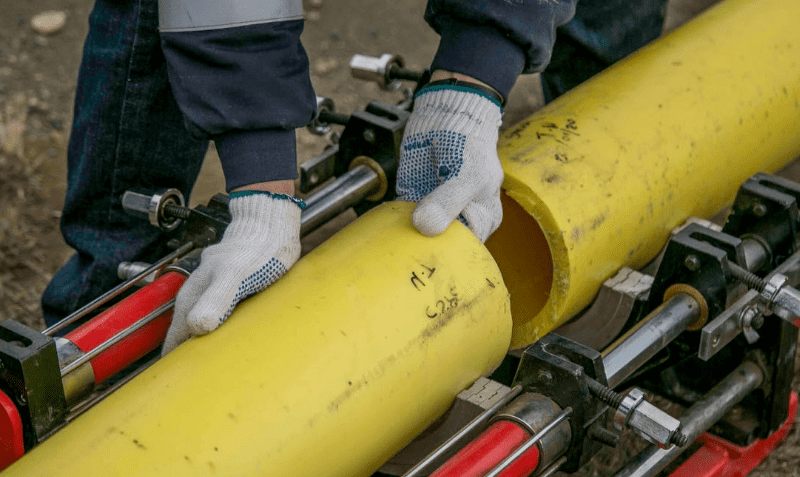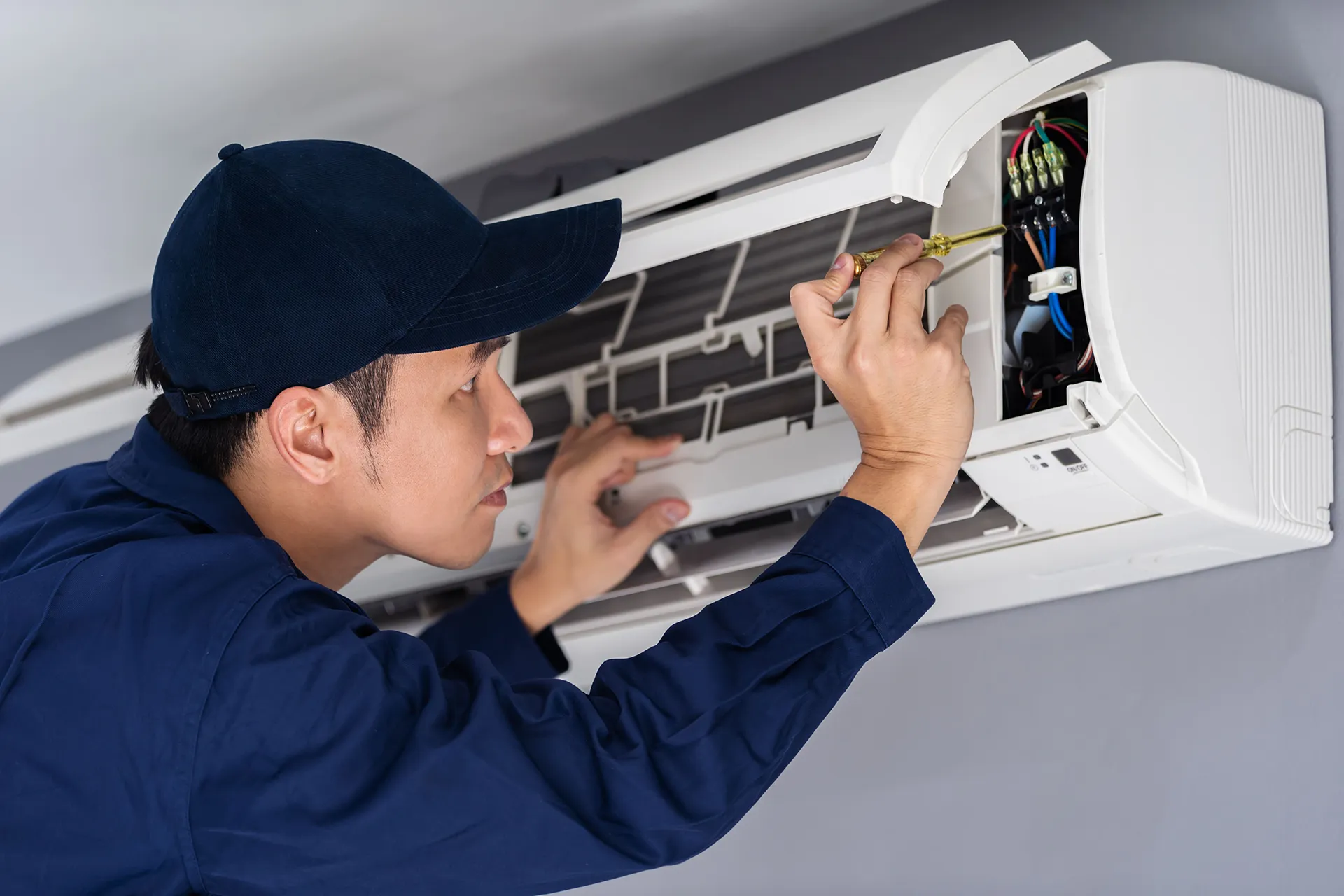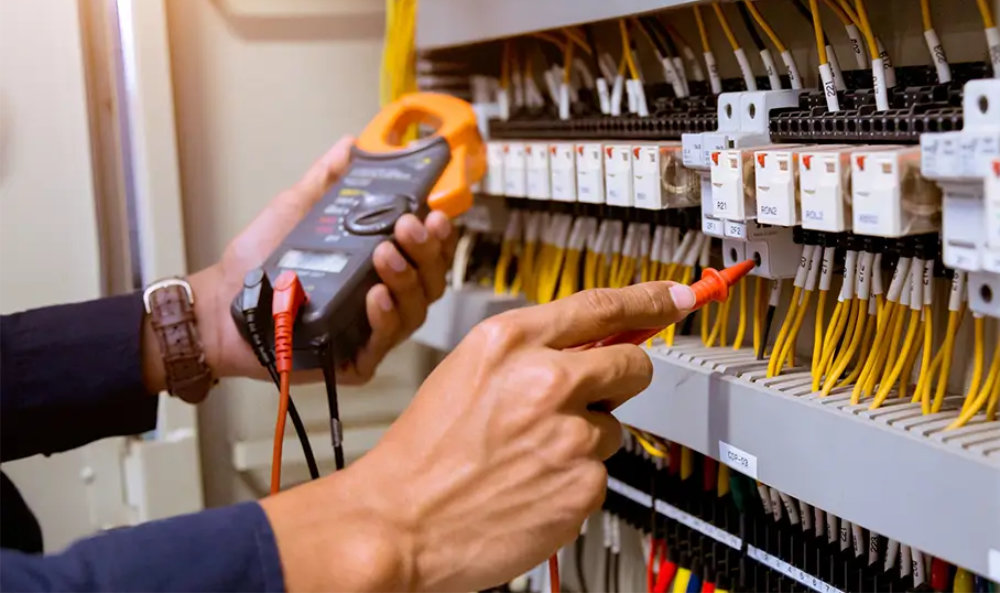If this is the first time you are hearing about air scrubbers, don't worry, you're in good hands.
Let's give this subject a thorough scrubbing.
An air scrubber installed on the ductwork of your HVAC system helps clean the air more thoroughly than most filtration systems. Air scrubbers work by filtering air through multiple layers of HEPA filters.
The comprehensive filtration system works best in scrubbing airborne pollutants from the air outdoors, preventing harmful contaminants, lingering odors, and other pollutants from getting into an indoor environment.
If your existing HVAC system doesn't have one, air scrubbers worth a pretty penny make good investments.
What Is an Air Scrubber?
An air scrubber is a sophisticated air purifier. These air-cleaning devices are integrated into the air ducts of central air conditioning systems. It isn't like the one you bought from Amazon.
The multifaceted filtration system is composed of a primary filter (HEPA filter) and an optional carbon filter with fans and motors.
Why Does My Current HVAC System Need an Additional Air Filtration Device?
An HVAC system typically already has built-in air filters, but older mechanisms can't keep up with the volume of today's airborne particles.
The rate of air pollution has never been higher, with a slight dip during the worldwide Stay at Home movement amidst the pandemic.
However, while traditional airborne contaminants such as secondhand smoke from cars and cigarettes took a break from clogging up HVAC systems, the pandemic brought its own airborne pathogens.
(STAY) At Home Air Scrubber
Airborne particles responsible for hitting the pause button on the whole world and arguably deadlier, the Novel Corona Virus (NCoV2), better known as COVID-19, are the most significant threats polluting our air space.
All kinds of air purifiers and air fresheners were suddenly in high demand.
The air scrubber technology is now one of the most prominent and sought-after integrations to keep air pollutants out of residential homes, buildings, and commercial establishments.
An air scrubber keeps hazardous air pollutants from your home's air, keeping you out of hospitals.
How Does an Air Scrubber Work?
Air scrubbers remove dust, where pathogens often stick, but their versatile filtration system catches smaller and larger particles.
The primary filter inside an air scrubber is a HEPA filter. It helps remove particulate matter from hazardous gas and vapor molecules.
Airborne contaminants pass through multiple fine layers helping clean the air more thoroughly.
The optional carbon filter on top of the primary filter heightens the firewall that airborne pollutants have to get through to penetrate your indoor environment.
There are two types of air scrubbers that help effectively clean the air.
Wet Air Scrubber
A wet air scrubber utilizes water-based solutions and damp pads to entrap molecular contaminants.
Wet air scrubbers work best for environments that increase fire hazards, drenching flammable pollutants in non-toxic cleaning agents.
Dry Air Scrubber
Integrated air scrubbers are sometimes dry. They don't use the same systems as wet types of air scrubbers but can increase indoor air quality and filter out contaminants just as efficiently.
Most portable air scrubbers are better dry to eliminate the sludge from filtered out contaminants after going through a wet type of air scrubber.
How Do Air Scrubbers Affect Indoor Air Quality?
Harmful particles from the air can make you and your family sick, and they can enter your home through more than just your doors and windows.
When you open your exhaust fan, your indoor space isn't just letting unpleasant odors out and welcoming clean air to take its place.
Negative air pressure can prevent indoor pollution and clean outdoor air from entering.
Depending on your home's air balance, outdoor pollution can enter through your home's doors, windows, chimneys, and mechanical ventilation systems.
Lower pressure indoors can trap pollutants in exhaust tubes and block any fresh air from taking its place, effectively lowering Indoor Air Quality.
The Environmental Protection Agency (EPA) warns Americans about Indoor Air Quality negligence and advocates for raising more awareness about its importance, especially in today's climate.
Indoor Air Quality
Indoor Air Quality (IAQ) measures the air quality in and around an indoor space.
Its measurement is calculated by detecting the volume of Volatile Organic Compounds (VOC) present indoors.
Some industrial inspections include measuring how much Carbon Monoxide (CO) is in a structure's indoor air.
When higher rates of VOC or CO are picked up, your indoor environment is considered polluted or congested with contaminated air.
While these chemical compounds are the only ones picked up by IAQ measuring devices, more airborne contaminants contribute to indoor air pollution.
Airborne Contaminants
When contaminated air flows through indoor environments, it could trigger allergy symptoms, asthma attacks, and worse respiratory conditions.
With so many types of airborne particles, air purifiers and other basic air-cleaning devices won't always catch them all.
An air scrubber works more effectively to clean the air and get rid of nasty odors using HEPA filters, ultraviolet light (UV), and Ozone Technology.
Here are some of the most common pollutants contaminating the air outdoors and indoors.
Toxic Gases and Chemical Fumes
CO is entirely human-made. It comes from the smoke emitted from burning synthetic materials. It is more hazardous to human health than its more natural counterpart, Carbon Dioxide (Co2).
Co2 comes from natural sources like waste heat and natural decomposition. While Co2 isn't as harmful to our bodies, it is one of the largest contributors to greenhouse gases.
Volatile Organic Compounds
VOC is found in regular household items, like perfume and air fresheners.
It's one of the hardest contaminants to trap or dispel from indoor air. It greatly reduces any environment's air quality.
Air purifiers that don't have UV light functions will have a harder time ridding the air of VOCs and can get congested by it more quickly.
Airborne Toxins
Airborne toxins come from various bacterial or viral contaminants derived from chemical compounds, and they range from:
- Asbestos
- Mercury
- Chromium
- Cadmium
All of which can cause a multitude of illnesses or long-term brain damage.
Mold Spores
If you develop skin rashes and sores or experience headaches, nausea, vomiting, and problems with your vision, mold spores might be present in your air pollution!
Mold and mildew may be the worst contributor among all contaminants. It can spread through air conditioning systems and cause an infestation in your lungs and building.
More robust variants are harder to detect, and your air purifier might already be contaminated.
Dust Mites
A dust mite doesn't need water to survive. It absorbs the moisture in the air and thrives on stagnant humidity.
It only lives for a couple of months, but by the time one leaves, it goes in a blaze of glory by reproducing incredibly fast and leaving thousands of others in its wake.
Larger Particles
Pollen, pet dander, hair, dust bunnies, and other typical contaminants cause other impurities to linger in your air much longer.
While all the different filters within an air scrubber work well in filtering out microorganisms and other microscopic particles, it does an optimal job of catching bigger particles just as well.
How Air Scrubbers are Improving Indoor Air Quality
An air scrubber poses features that detect, dilute, and destroy all types of air contaminants.
Dust mites are one of the primary contaminants any purifier, and not just an air scrubber, is built to filter out. However, air purifiers that don't have UV light functions will have a harder time ridding the air of microscopic pollutants like VOCs and can get congested by it more quickly.
The Special Components of an Air Scrubber
The ionization process of UV light treatment within an air scrubber eradicates dust mites and mold more efficiently than your typical air purifier.
Preventing a mold infestation is where your home air scrubber finally pays it forward on your initial investment.
While an air scrubber costs more than an integrated air cleaning system or portable air purifying device, they are worth every penny in the long run.
Integrated Air Scrubbers
The more permanent type of air scrubber is integrated into existing air conditioning systems.
Its integration is fitted into the ductwork, operating consistently to filter pollutants and deliver high-quality air indoors.
Portable Air Scrubbers
A portable air scrubber works a lot like a portable air purifier.
It's sleeker in design with lightweight materials and more compact composition. However, an air purifier doesn't possess the same multifaceted filtration features as an air scrubber.
HVAC Systems and Air Conditioning
HVAC systems come with built-in air purifiers, and innovative air conditioners have more extensive air filtration systems.
Innovative air filters help produce excellent quality air, and it's enough for some environments. However, in states with a hotter climate like Oregon, humidity can clog regular air filters quickly.
An air scrubber may help lessen the frequency homeowners schedule the routine maintenance of their AC systems. Still, even with the best air scrubber, air conditioning system, and ventilation system, your home's overall air conditioning comfort hangs in the balance with less reliable contractors.
It takes more than an air scrubber with a sophisticated HEPA filter to save you from faulty installations and poor maintenance.
Sunset Heating and Cooling Electrical
If you're looking for a reliable HVAC contractor to tell you more about air scrubbers and indoor air quality without taking undue advantage, visit the Sunset Heating and Cooling Electrical website.
Call (503) 500-5866
Call us for more urgent concerns, such as immediate air balancing services, IAQ testing, and extensive cleaning.
In Business Since 1922
We've been servicing HVAC systems all around Oregon for one hundred years.







